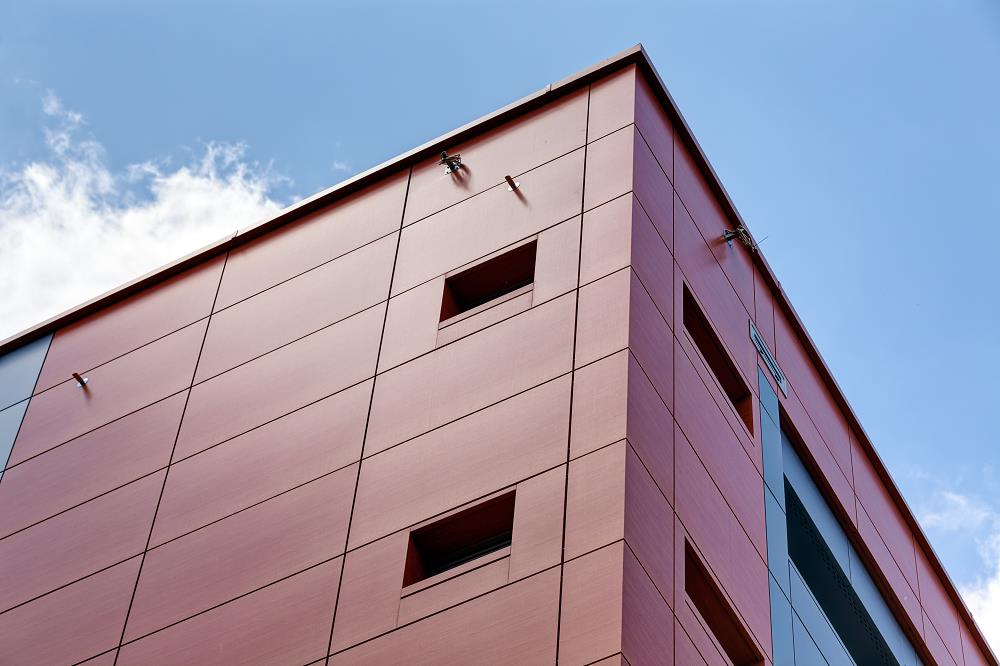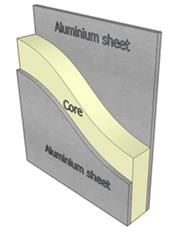Introduction
Aluminium Composite Panels "ACP" is a building cladding material commonly used in internal and external wall systems for its light weight, durability and structural performance. Recently there has been an increased awareness and concern around ACP cladding and the fire risk associated with ACP cladding following a number of cladding fires around the world, including Australia.

ACP Cladding systems ACP panels are typically 4mm to 6mm thick and consists of core material sandwiched between two thin layers of aluminium. The core material is generally 3mm to 5mm thick with the aluminium sheets each at 0.5mm thick.

The composition of the core materials used in ACP vary, the four general categories of ACP which is defined by their core materials are:

The Fire Risks Associated with ACP The fire performance of any ACP cladding system installed on a building should be understood entirely in respect to its installation, the existing fire protection systems and life safety considerations. The behaviour of aluminium cladding products with polyethylene core have been well documented and it is classified as a combustible product. Once ignited, the polyethylene burns vigorously with the convected heat spreading flames up-ward to involve further cladding sheets.
The fire has also been shown to spread laterally via radiant heat and wind driven convection to cladding panels to either side, which can lead to the fire involving the cladding on adjacent surfaces. The third mechanism for fire spread from polyethylene panels is for the burning material to create flaming droplets, which ignites panels located below where the fire starts. These droplets can also cause exits located below PE panels to become unusable.
Government Actions and Regulatory Framework The primary legislation applicable to construction is the National Construction Code, previously known as the BCA. The BCA provides a set of prescriptive requirements, the deemed to satisfy (DtS) provisions, that provides a deemed acceptable level of safety and assumed compliance with the BCA Performance Requirements. Variations from the BCA DtS provisions may be addressed as Performance Solutions if they can be shown to comply with the relevant BCA Performance Requirements. To manage the potential issues of problematic ACP, Federal and State Governments have established inquiries into the potential exposure for buildings in relation to non-conforming and non-compliant building products. Governments are particularly focused on the potential exposure caused by inappropriate use of some types of aluminium composite panels (ACPs).
Property Owner Investigations A number of strata schemes are auditing their properties to determine which properties contain ACP. Their audit includes investigations that accurately identify the ACP type and the installation method. Where required risk assessments are being undertaken to understand the risk associated with the ACP that includes consideration of fire protection systems at each location. Approach to ACP Identification and Reporting The Insurance Council of Australia, The Fire Protection Association and Engineers Australia have developed an ACP identification and reporting protocol. A summary of this protocol is outlined in the following steps below:
Step 1 - Identification of Materials It is critical to accurately understand which type of ACP cladding has been used at a building. The primary purpose is to accurately classify and quantify the materials present in order to determine the fire load along with its location and proximity to ignition sources. If you have ACP or suspect you have ACP in your tenancy we recommend you undertake investigations to accurately identify the ACP. The investigation should be completed by a competent fire protection or fire safety professional and their report should answer the following questions:
Who has carried out inspections and testing for the tenant, and testing of the cladding material, what are their relevant competencies, qualifications and experience and what testing laboratories were used to test the samples?
What category(s) of ACPs are present on the building?
What quantity of the material is present and extent of coverage (m2)?
What substrate or insulation is present behind the ACP?
What potential ignition sources exist for the ACP given the configuration of the building?
Step 2 - Evaluate the Exposure Using the identification and quantification outcomes of Step 1, the purpose of this step is to provide a consistent report into the exposure of the building regarding the presence of ACPs.
Step 3 - Remedial Actions for Consideration Remedial actions (if any are required) will be different from building to building and dependent on the category of ACP and insulation/sarking installed. Depending on the quantity of ACP installed, its configuration and installation, there is the potential for actions to be taken that would not necessarily involve 100 per cent replacement.
Conclusion
Inspections, assessments and reports commissioned by a tenant to determine the risk associated with the presence of ACPs on a building should be carried out by competent fire protection professionals including fire safety engineers.
This article was supplied by:
Hennie van der Merwe
National Business Development Manager
